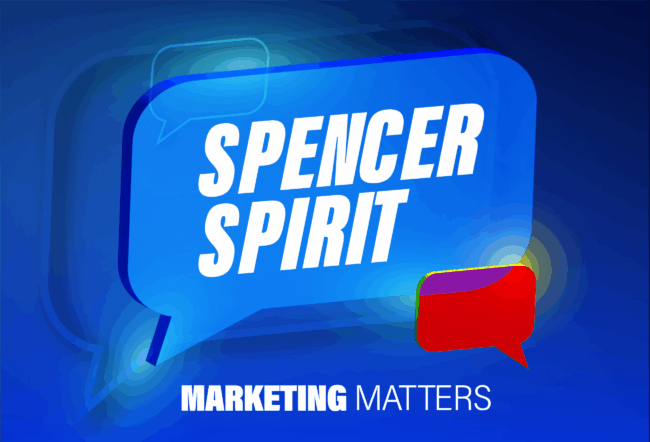Consider this cautionary tale of corporate sponsorship: When the Cleveland Children’s Museum received $100,000 in 1997 from the Rainbow Hospital and TRW Inc., the museum changed its name to the Rainbow Children’s Museum and TRW Early Learning Center. But the name change alienated the institution’s target audience, according to Karen Prasser, the museum’s executive director. “Some children thought the museum was affiliated with the hospital,” she recalls. “And they hesitated to come in, thinking they were going to get injections.” The basic concept of corporate sponsorship is not new—every time a business pays for print, radio, television or other advertising, the company is essentially sponsoring the media outlet in exchange for publicity. On an even more local level, companies do this all the time when they sponsor a Little League team or other athletic endeavor. But the stakes, and the financing, took a great leap forward in the last decade as companies, flush with cash from a booming stock market, began shelling out serious money for naming rights to baseball and basketball stadiums and other high-profile institutions. One of the early deals was back in 1995, when 3Com, a Santa Clara, Calif.-based computer network equipment maker, bought the naming rights to San Francisco’s Candlestick Park for a reported $900,000 a year. More recently, in January 1999, PSINet, an Ashburn, Va.-based provider of Internet and information technology services, inked a 20-year, stadium-naming contract with the Baltimore Ravens football team that went for a reported $105.5 million. The theory behind these multi-million dollar deals was that they would offer both short-term and long-term branding benefits. For example, the mere mention of a corporate stadium, broadcast over TV or radio airwaves, would bring instant name recognition. And the positive fan experience, which would hopefully be repeated with each visit to the stadium, would help to cement a long-term consumer relationship. The concept of leverage underpinned the approach and justified the high cash layouts. Instead of buying advertising time and effectively paying for publicity on a per-mention basis—which, with airtime during the most recent Super Bowl offered at a record $2.3 million for 30 seconds of exposure, can get to be very expensive—some companies would rather enter into a long-term sponsorship arrangement that pays off every time an announcer mentions the stadium that bears its name. Of course, that assumes the name gets mentioned. Wharton marketing professor
Even so, corporate sponsorship may be a viable approach. Before committing funds, however, a company should answer some basic questions, such as determining how the anticipated payback will be measured against the expected return.
In fact, according to Wharton legal studies professor Kenneth Shropshire, who has authored a book on the impact that stadiums have on their host cities, many sponsorship agreements are driven for the wrong reason, like the sheer thrill of seeing a company’s name and logo inscribed on a stadium. “These transactions often involve some ego gratification on the part of the sponsoring company’s CEO,” says Shropshire. “Instead, before signing a deal, a sponsor company should research the particular sport segment to see if it connects with the target consumer market.”
Perhaps sports sponsorship and other types of association-marketing arrangements reflect society’s drive for instant gratification. Place a company’s name on a stadium and the firm gets (it hopes) instant name recognition from being associated with a winning team. This kind of brand equity “uniquely defines a company and can’t be easily copied,” says Wharton marketing professor Barbara Kahn. “It differentiates the firm and promotes top-of-mind awareness among its consumer market.”
Association marketing efforts usually focus on product, but current research suggests that stronger bonds may be established by going beyond that to build an emotional connection, Kahn adds. “Instead of limiting a relationship to a brand and product, the new marketing paradigm is a more customer-centric approach that links the brand, the consumer and the greater community. If your customer base goes to a stadium or other institution, then that’s where you place your name.”
But corporate sponsorship efforts can also boomerang. Kahn says. For example, a company’s reputation could suffer if the team it sponsors slides into a losing streak. And even if the team’s a winner, a stadium-sponsor may still come out a loser.
That appears to be the case with PSINet. Its stock was trading around $17 a share when the Ravens Stadium was renamed the PSINet Stadium back in 1999. But although the Ravens went on to win the most recent Superbowl, the magic didn’t rub off on PSINet, which saw its stock price drop to just under 19 cents a share before it was delisted.
PSINet is not alone. Remember 3Com? When it renamed Candlestick Park, the company’s stock was trading at about $39 a share. By May 7, 2001, however, it was down to $6.57 and the company recently announced plans to lay off close to 40% of its workforce.
The dramatic downturn in the valuation of stadium sponsors has led some observers to speculate about a “naming curse,” an expression of displeasure on the part of Wall Street that pummels a company’s stocks when it buys naming rights to a stadium.
But is the cause-and-effect that simple? After all, dot-coms, which were flush with money during the ‘90s, were among the major players in this segment because they wanted the instant recognition that sponsorship yielded. And now, with the industry-wide meltdown of high-tech stocks, it’s only logical that an industry that was over-represented in the sponsorship strategy would be over-represented in the list of companies whose stock is being pummeled. In fact, in a generally down market, the retailer Staples Inc. (which paid a reported $100 million in 1997 to name Staples Stadium, home of the Los Angeles Lakers basketball team) has seen its stock price dip only marginally, from $19.70 at the time of the naming deal to $16.31 in early May 2001.
Indeed, a corporate sponsorship agreement can produce meaningful results when it’s done in an “analytical and thoughtful manner,” according to Greg Kelly, a principal in the Atlanta office of McKinsey & Company. “When a company asks how the sponsorship will impact its business, and how relevant the association is to the brand, it can be meaningful,” he says. “Relevancy and interactivity are two considerations.”
He cites the Philips Arena in Atlanta (home to the Atlanta Thrashers hockey team and the Atlanta Hawks basketball team) as an example. Royal Philips technology is present throughout the Arena, beginning at the stadium’s 22 entrances, where state-of-the-art turnstiles and ticket scanners greet visitors, and inside, where hundreds of large-screen TV monitors are located throughout the concourse and in the two main restaurants. One focal point is the 10,000-square-foot Philips Experience showcase which contains interactive pastimes, including a three-sided video tower featuring a multitude of programming, including action from the court during games.
“Measuring the impact of a stadium or other sponsorship is not easy,” observes Kelly. “A company needs qualitative research over a period of time. The practice of corporate sponsorship will grow to the extent it’s done well. But it’s not always easy to link a name on a stadium to what a company is trying to achieve.”
In fact it can be downright counter-productive, as the Cleveland Children’s Museum found out. Not only did children associate the museum with a doctor’s office, but the renaming also soured relations with some other benefactor foundations, which were upset that the museum didn’t take on their names despite contributions of $500,000 or more apiece.
“In July 2000 we changed our name to the more neutral Children’s Museum of Cleveland,” says Prasser. “The next time we will think long and hard about accepting a corporate sponsorship that would take away from the identity of our institution.”
Economics, however, may continue to drive institutions to seek corporate sponsorships. Michael Kempner, CEO of Golin/Harris International’s East Rutherford, NJ-based public relations company, the MWW Group, observes that in a tight-money period, contributions from government agencies to philanthropic organizations may shrivel. As that happens, institutions will look more to the corporate sector to fill funding gaps.
“It’s like the signs you see on the road, where ‘XYZ’ corporation ‘adopts’ a stretch of highway,” he says. “When it’s done right, sponsorship can really work. But when it’s done for ego, like the $100 million-plus PSINet sponsorship, it can be a flop.”
Stadium or other types of institutional marketing do have some advantages over traditional advertising efforts. As Geoffrey Sands, a media and entertainment practice partner with Booz-Allen & Hamilton, notes from his New York City office, “You can’t bypass a name on a stadium the way you zap through a commercial—it’s tougher to ignore. While each sponsorship needs to be measured for its effectiveness, a lot of marketers are looking for a less cluttered, higher-impact way to get a brand in the public eye. Associating with marquee properties is one way to accomplish this.”
Association marketing has a lot in common with sports—it’s a fast-moving approach that demands accuracy and it puts a great deal of money at risk. While the right deal can offer immediate, widespread brand recognition, the wrong agreement can wreak havoc on a company’s finances.
And as the Children’s Museum of Cleveland discovered, the risk can even extend to the institution that receives the funds. Another deal, made by the National Hockey League’s St. Louis Blues, illustrates this. Last year, according to published reports, Blues owners Bill and Nancy Laurie sold the naming rights of the Blues home stadium, the Kiel Center, to Savvis Communications Corp. for 20 years in a cash-and-stock deal then valued at some $72 million. On Aug. 17, 2000, the day the deal was signed, the 750,000 shares of Savvis stock transferred to the Lauries were trading at about $9.75 per share. By the first week of May 2001, the St. Louis-based Internet and data service provider’s stock was trading around $2 per share, which gave the Lauries an unrealized loss of more than $5.8 million on the stock portion of their deal.
So if your company wants to sponsor a stadium as a way to generate more publicity, it pays to mount a careful study before you sign on the dotted line. And if your stadium, museum or other facility is thinking of selling its name to raise funds, it might be wise to get payment in cash, and up front.



